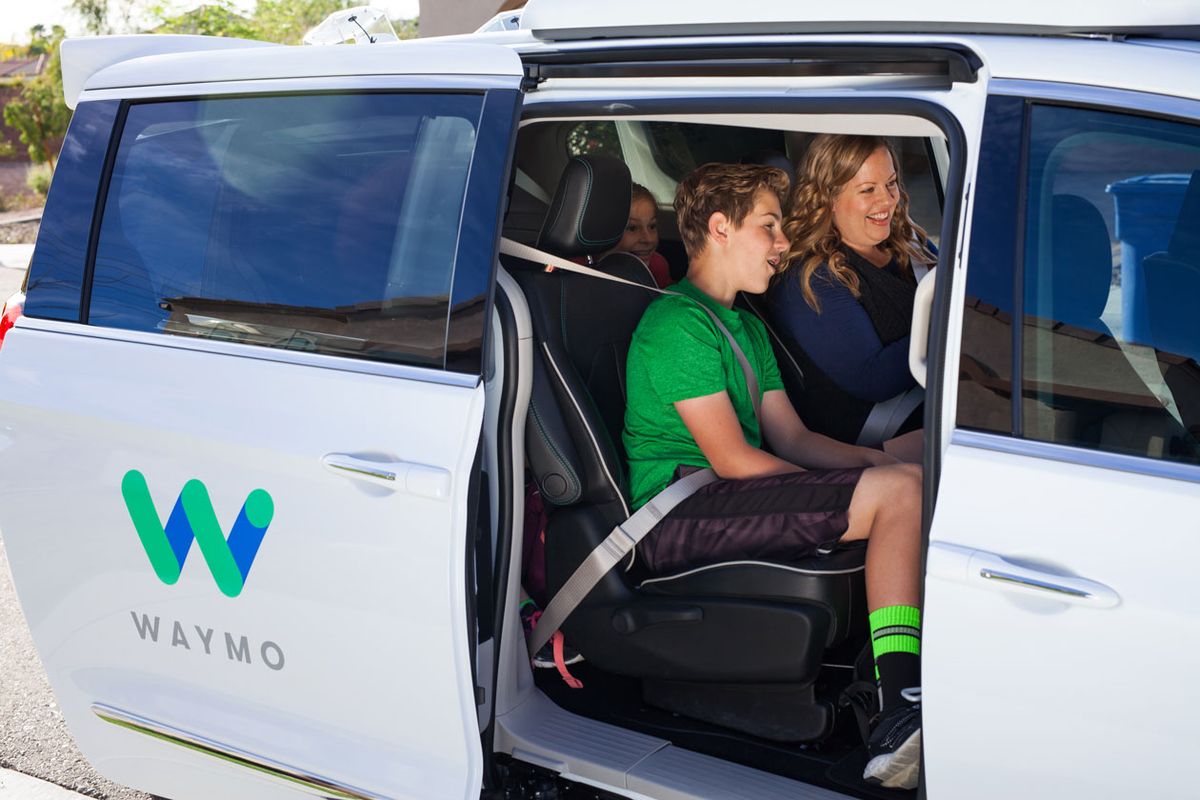THE INSTITUTEDozens of companies around the world are hoping to stake a claim in the growing arena of autonomous cars, buses, and trucks. GM announced in December that it will cease making several models of its traditional cars to focus on building autonomous vehicles—no pedals or steering wheel—by 2021. BMW, Daimler, and Nissan are testing driverless buses in Estonia, Germany, and Switzerland, according to Forbes.
Waymo, a self-driving technology development company and subsidiary of Google’s parent company, Alphabet, is testing a self-driving taxi service, Waymo One, in the Phoenix suburbs. The taxis have human backup drivers, who can take control if need be.
The company is not giving everyone in the Phoenix area access to the taxi service; since April 2017, only a select few riders have been testing the service. Eventually, the company plans to expand its program, without human drivers. For now, though, it is working to build the public’s trust.
Many people are excited about autonomous vehicles. They could decrease traffic congestion, reduce the number of accidents, and improve mobility for the elderly and disabled. But critics have decried the early deployment of such technology, which has resulted in at least one death.
In March a self-driving Uber vehicle struck and killed a pedestrian crossing the street at night in Tempe, Ariz. With its 360-degree cameras and sensors, the car should have been able to detect someone crossing in front of it, even at night, according to a report in The Telegraph. Safety reports released by Uber in November said the software that detects obstacles on the road and processes that information was too slow to act in Tempe. Uber says its engineers are working to reduce the delay between when the car’s sensors observe a pedestrian or other obstacle and the vehicle responds with an action.
The driverless car in Tempe had a backup driver, who was behind the wheel at the time of the accident. Video surveillance within the taxi showed that she was streaming a TV show on her phone right before the collision. All on-road testing of Uber driverless cars was suspended after the accident.
Even though the accident did not involve a Waymo cab, the company seems to be paying the price. Police have documented more than 20 physical attacks on the company’s driverless taxis in and around Phoenix, according to a National Public Radio report.
When NPR asked Arizona Republic reporter Ryan Randazzo about the nature of the attacks, he said, “someone ran from a local park and slashed the tires of one sitting in traffic on a road nearby. Other cabs have been run off the road. Someone in a Jeep ran the self-driving car off the road at least six times. The worst was when a man aimed a gun at one as it drove past his driveway. He was arrested.”
Driverless cars seemed to reach peak hype in late 2017, according to Ars Technica. Expectations were high, and 2018 was a year of designing, building, and testing the vehicles. Since the fatal Uber accident, however, many observers have been wondering if driverless cars are ready to hit the streets.
Would you trust a self-driving car to take you to your destination, or do you think such trips are still too dangerous?
Joanna Goodrich is the associate editor of The Institute, covering the work and accomplishments of IEEE members and IEEE and technology-related events. She has a master's degree in health communications from Rutgers University, in New Brunswick, N.J.



